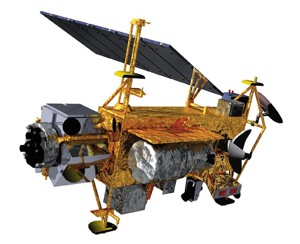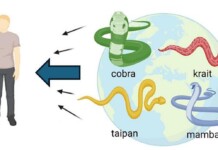 NASA said a fond farewell to the first satellite dedicated to studying the science of the stratosphere.
NASA said a fond farewell to the first satellite dedicated to studying the science of the stratosphere.
The Upper Atmosphere Research Satellite (UARS) launched from the Space Shuttle Discovery 20 years ago plummeted finally toward its demise in the Pacific early this morning. It delivered several scientific breakthroughs over its two decades.
The seven-ton spacecraft, designed to operate for only three years, actually showed itself to be a workhorse, measuring chemicals, winds and temperatures in the upper atmosphere for 14 years, and orbiting the Earth more than 78,000 times.
In its first two weeks of operation, UARS data confirmed scientists’ theories about an ozone hole at the South Pole and later provided conclusive evidence that chlorine in the atmosphere—originating from human-produced chlorofluorocarbons—was at the root of the ozone depletion problem.
(READ the story in Discovery.com)



















